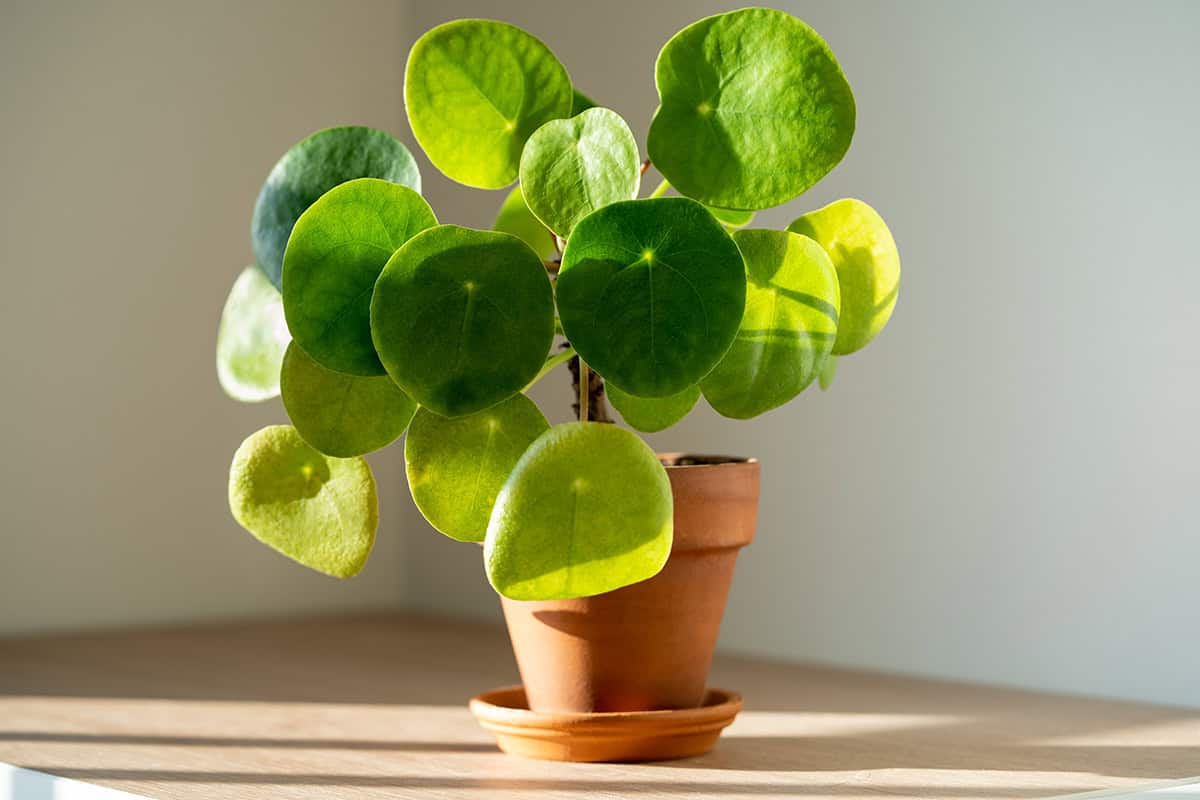You bring home a charming Pilea plant, excited to add its unique, coin-shaped leaves to your collection. But now, you’re wondering how to keep it looking its best. Caring for a Pilea plant is straightforward once you know the essentials. Learn the tips that ensure your Pilea thrives and adds a vibrant touch to your home.
| Common Name | Pilea, Chinese Money Plant |
| Botanical Name | Pilea peperomioides |
| Family | Urticaceae |
| History & Origin | Native to Yunnan Province, China |
| Plant Type | Perennial, herbaceous |
| Mature Size | 12 inches tall and wide |
| Sun Exposure | Bright, indirect light |
| Soil Type | Well-draining potting mix |
| Soil pH | 6.0-7.0 |
| Temperature | 60-75°F |
| Watering | Water when the top inch of soil is dry |
| Fertilizing | Monthly during the growing season with balanced fertilizer |
| Bloom Time | Rarely blooms indoors |
| Flower Color | Small, white |
| Hardiness Zone | 10-12 USDA |
| Toxicity | Non-toxic to pets and humans |
| Common Problems | Overwatering, root rot, pests like spider mites |
Table of Contents
Light
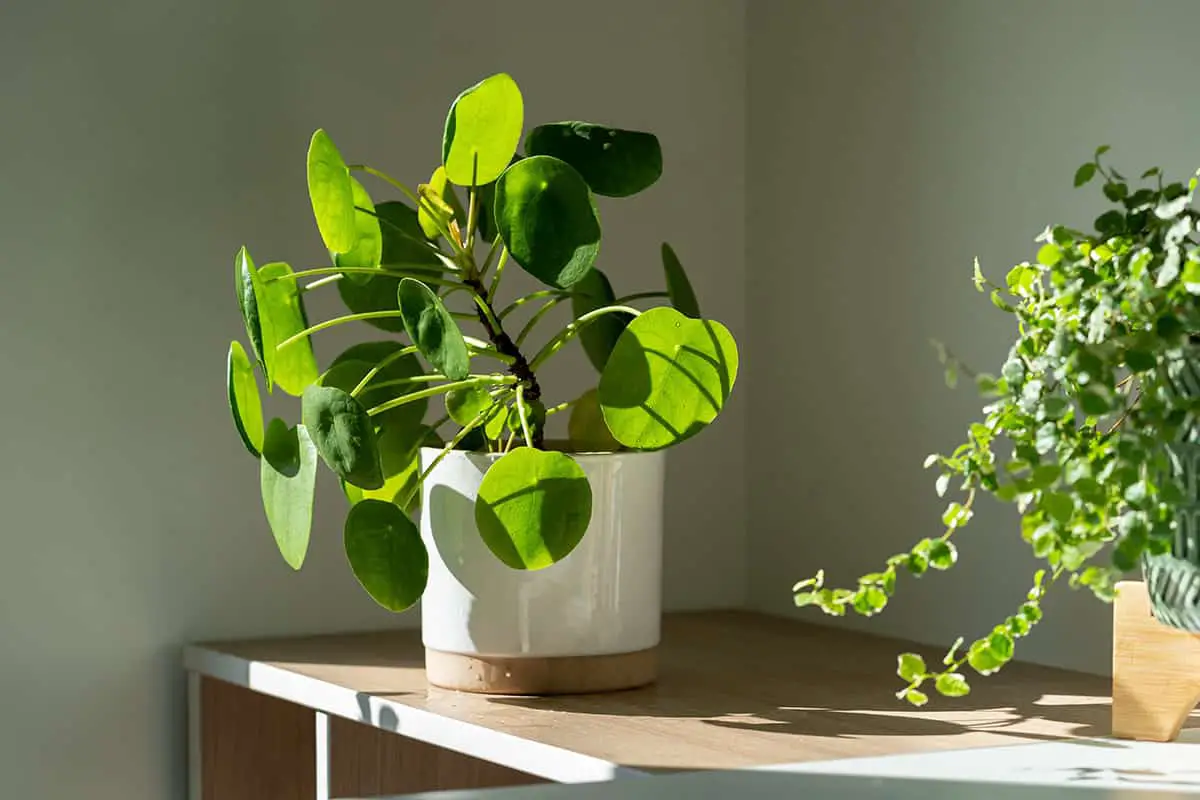
It’s important to ensure the Pilea plant receives bright, indirect light. Direct sunlight can be too intense and may cause the leaves to scorch or wither.
Pilea plants do well in a range of light conditions, with some species even tolerating low light. However, it’s always better to place your plant near a window or in a bright room to maintain healthy growth. Keep in mind that too little light can cause the Pilea to become leggy and lose its vibrant color.
To achieve a consistent light source, consider rotating your Pilea plant every few weeks. This helps in even growth and prevents the plant from leaning towards the light. In case natural light is not sufficient, you can also use artificial lighting, such as fluorescent lights, to supplement the plant’s needs.
Monitoring and adjusting the light conditions according to your Pilea’s requirements will make a significant impact on the overall health and appearance of your plant.
Soil
You should choose a peaty soil-based potting mix that is well-draining. A soil rich in organic matter will help promote proper root growth and overall plant health.
To maintain the appropriate moisture level, water your Pilea plant moderately during the growing season. Remember to water less in fall and late winter. Always check that the soil is dry before watering, and only water when the soil dries to prevent overwatering and root rot.
In addition to well-drained yet moist soil, your Pilea plant benefits from a humid environment. You can place the plant in an area with high humidity or create humidity by placing the pot on a tray filled with pebbles and water, ensuring the water does not touch the bottom of the pot.
Regularly adapting your watering schedule as the seasons change can make all the difference in your Pilea plant’s health. With proper soil choice, watering, and humidity, your Pilea plant will reward you with vigorous growth and beautiful foliage.
Watering
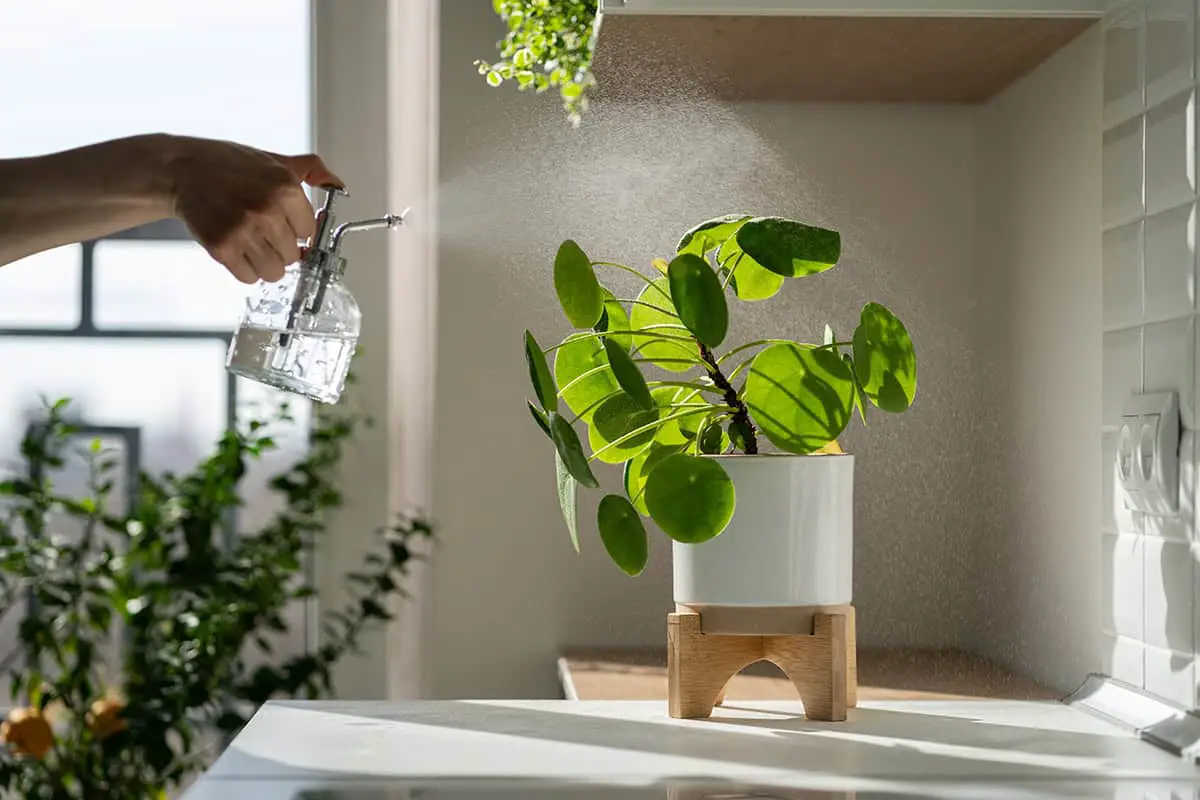
This plant thrives in a humid environment and requires consistently moist soil for optimal growth. To avoid over or under-watering, pay close attention to the soil moisture level.
You should aim to water your Pilea when the top 1 inch of the soil starts to feel dry. Moderately water it during the growing season and reduce the frequency in the fall and late winter. Make sure to use a well-draining pot to prevent root rot due to waterlogged soil.
It’s essential to maintain high humidity around your Pilea plant, as it originates from tropical regions. To create a more humid environment, you can place the plant on a tray filled with wet pebbles or use a humidifier. This will help replicate the plant’s natural habitat and ensure healthy growth.
By consistently monitoring soil moisture and creating a humid environment, you’ll be able to maintain a healthy and thriving Pilea plant.
Temperature and Humidity
Pilea plants thrive in temperatures between 65°F to 75°F. To maintain a healthy environment for your Pilea, avoid placing it in hot spots or cold drafts. They won’t prosper near furnace vents or entrances where cold air enters.
In addition to temperature, humidity plays a significant role in Pilea care. Most Pilea plants prefer a humid environment. You can maintain high humidity by placing the plant in a humidified room or setting it on a tray of wet pebbles. Remember to keep the soil consistently moist but not soggy, as overwatering can cause root rot.
While handling your Pilea, ensure that the surroundings have sufficient bright indirect light. Excessive exposure to direct sunlight might harm the plant. Additionally, use a peaty soil-based potting mix to encourage growth and maintain a healthy root system.
By paying attention to temperature, humidity, and proper lighting, you’ll be able to provide the best care for your Pilea plant, ensuring remarkable growth and longevity.
Fertilizer
Applying the right fertilizer to your Pilea plant is crucial for its growth. Firstly, Pilea microphylla requires light fertilizer applications to ensure healthy growth. It is best to use a balanced, water-soluble fertilizer.
You can follow a simple monthly schedule during the growing season, typically from spring to early fall. To maximize nutrient absorption in your Pilea plant, dilute the fertilizer to half its strength. This will prevent excess nutrients from building up, which could harm your plant. Remember to always water your Pilea right after applying the fertilizer.
During the dormant season, reduce the frequency of fertilizing to once every two months. Over-fertilizing during this time could hurt its delicate roots and negatively impact its growth.
Lastly, it’s important to keep an eye on your Pilea plant’s appearance. Yellowing leaves or diminished growth may indicate a need for more nutrients. In this case, consider increasing the frequency of fertilizer applications.
Propagation
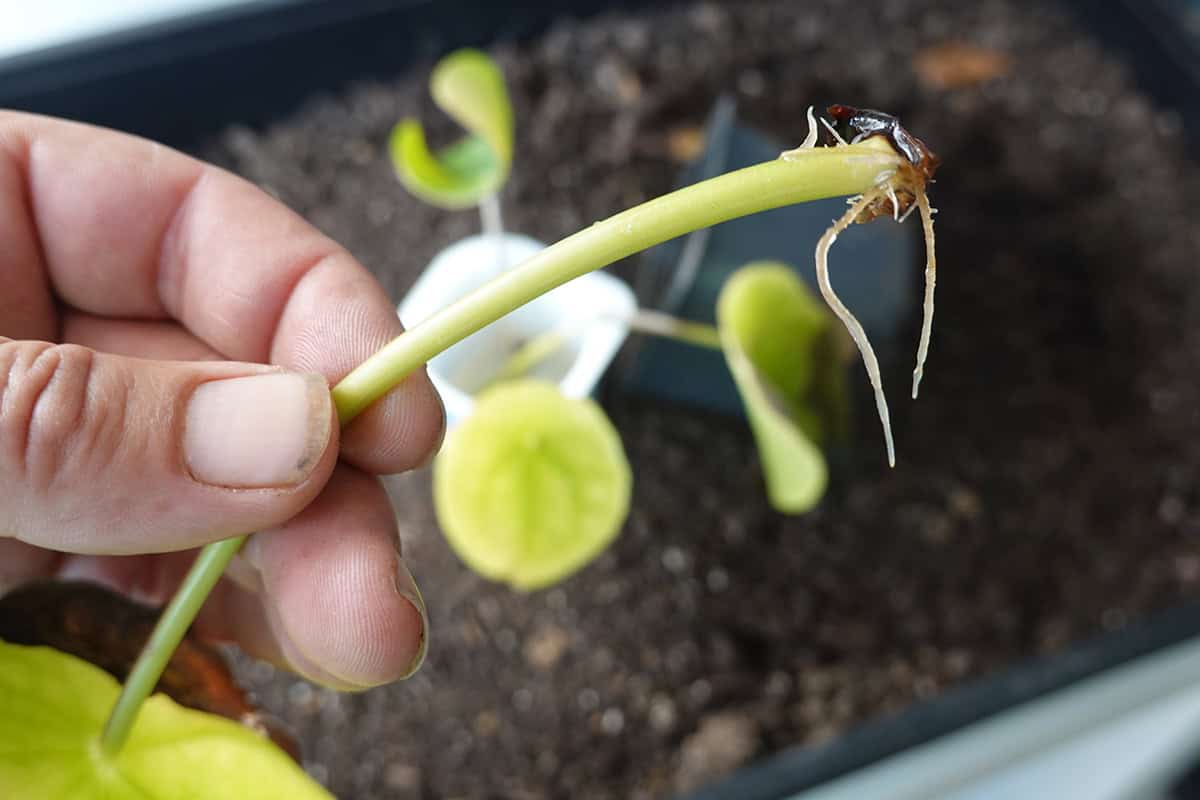
You can easily propagate your Pilea plant with stem cuttings. Make sure to cut just below a node, which is the joint from where leaves grow. Obtain a cutting with at least two leaves for better chances of success.
Next, place the cutting in water or moist soil. Keep the container in a spot with indirect sunlight, ensuring the medium remains moist. In a few weeks, you should notice new roots forming. Once the roots have been established, transplant the cutting into a pot filled with well-draining soil.
The ideal environment for Pilea plants is a humid atmosphere with semi-shade. Watering your plant is crucial as they prefer consistently moist soil. However, be careful not to overwater, which may lead to root rot.
Pruning
Caring for your Pilea plant involves regular pruning. This process promotes healthy growth and maintains the desired shape.
To begin, remove any damaged or yellowed leaves as they appear. Next, trim any leggy or overgrown stems to help the plant maintain a compact appearance and encourage denser growth.
Occasionally, your Pilea plant may produce suckers or unwanted stems. You should remove these as soon as you spot them. Proper pruning helps your Pilea to focus its resources on the main stem and leaves, as well as preventing it from becoming too congested. Ensure you are using clean and sharp pruning tools to avoid any harm to the plant.
General Pruning Guidelines provided by NC State Extension Publications suggest selecting the right cultivar to reduce the frequency of pruning. Always avoid heavy pruning during hot, dry weather. Instead, remove dead branches, suckers, crossing branches, and other weak stems that don’t contribute to the overall form early in the plant’s life.
Potting and Repotting
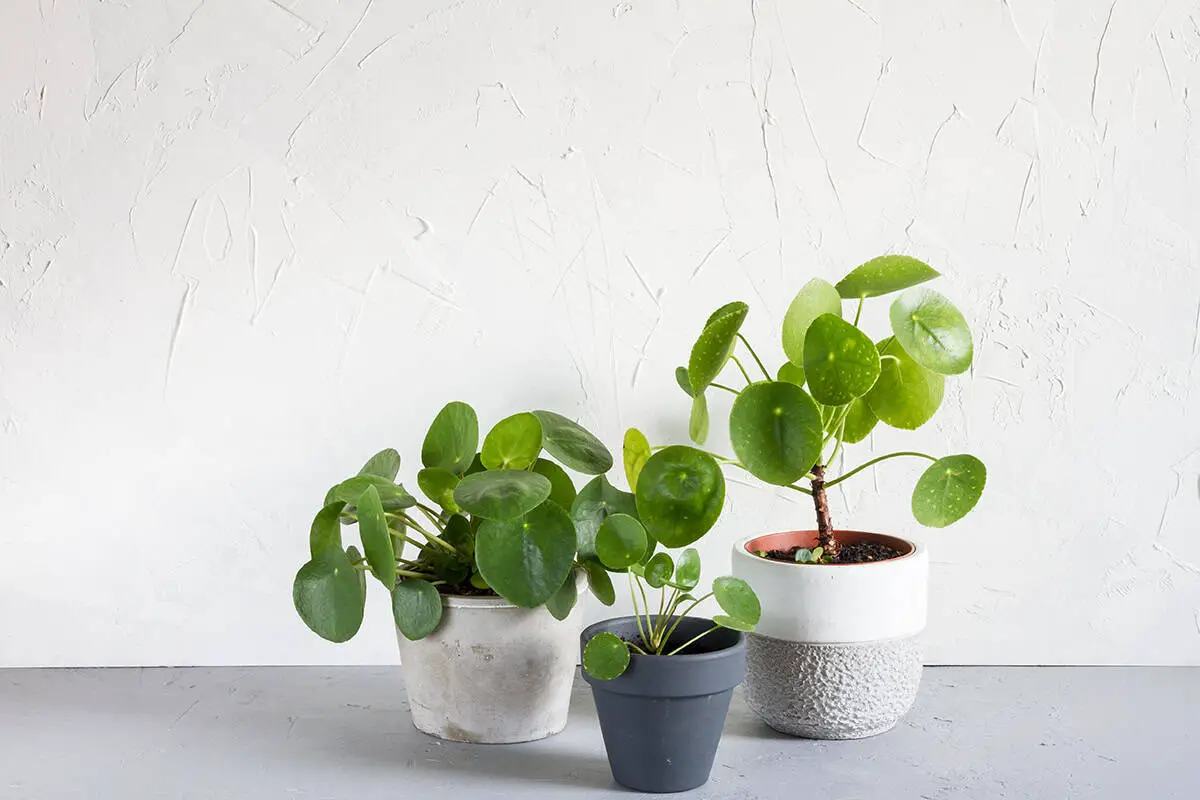
When potting your Pilea plant, select a peaty soil-based potting mix that provides good drainage. Place your plant in a warm, humid environment with bright, indirect light, which will ensure optimal growth conditions.
Repotting your Pilea is necessary when the plant outgrows its container or when there are signs that the plant needs a larger space to grow. Typically, repotting should be done every couple of years.
When you see a reduction in new growth, small leaves, or top-heavy plants prone to falling over, it is time to repot your Pilea.
When preparing to repot your Pilea, water the plant in its original container and let it sit for an hour. Meanwhile, choose a clean, slightly larger container for the repotted plant.
Gently remove the Pilea from its current pot, carefully handling its root ball. Place the plant into the new container with fresh potting mix and cover the roots with more soil. Press the soil gently around the plant to stabilize it, ensuring the soil is not overly compacted.
Common Problems & Troubleshooting
Overwatering: Pilea plants need well-drained and consistently moist soil. If you notice your plant’s leaves are yellowing or dropping, you might be overwatering it. Remember to water your Pilea when the top inch of soil is dry. Also, always use well-draining soil mixtures to prevent root rot.
Inadequate Light: Pilea plants thrive in bright, indirect sunlight. If your plant has leggy growth or small, pale leaves, it is likely not receiving enough light. Move your Pilea to a location where it will receive plenty of indirect sunlight throughout the day. Avoid exposing it to direct sunlight, as this can cause the leaves to burn.
Pests: Common pests that can affect Pilea plants include mealybugs, spider mites, and aphids. If you notice small, white bugs or webbing on the leaves, you need to take action immediately. Clean the leaves with a soft cloth dipped in soapy water or use an insecticidal soap or neem oil, following the label instructions.
Temperature and Humidity: Pilea plants thrive in a warm and humid environment. Keep your Pilea in a room with temperatures between 60 to 80°F (15 to 27°C) and maintain humidity levels above 50% for optimal growth. If the air is too dry, consider using a humidifier or placing a tray of water near the plant to maintain adequate humidity.
Pilea Plant Varieties
Pilea Peperomioides (Chinese Money Plant)
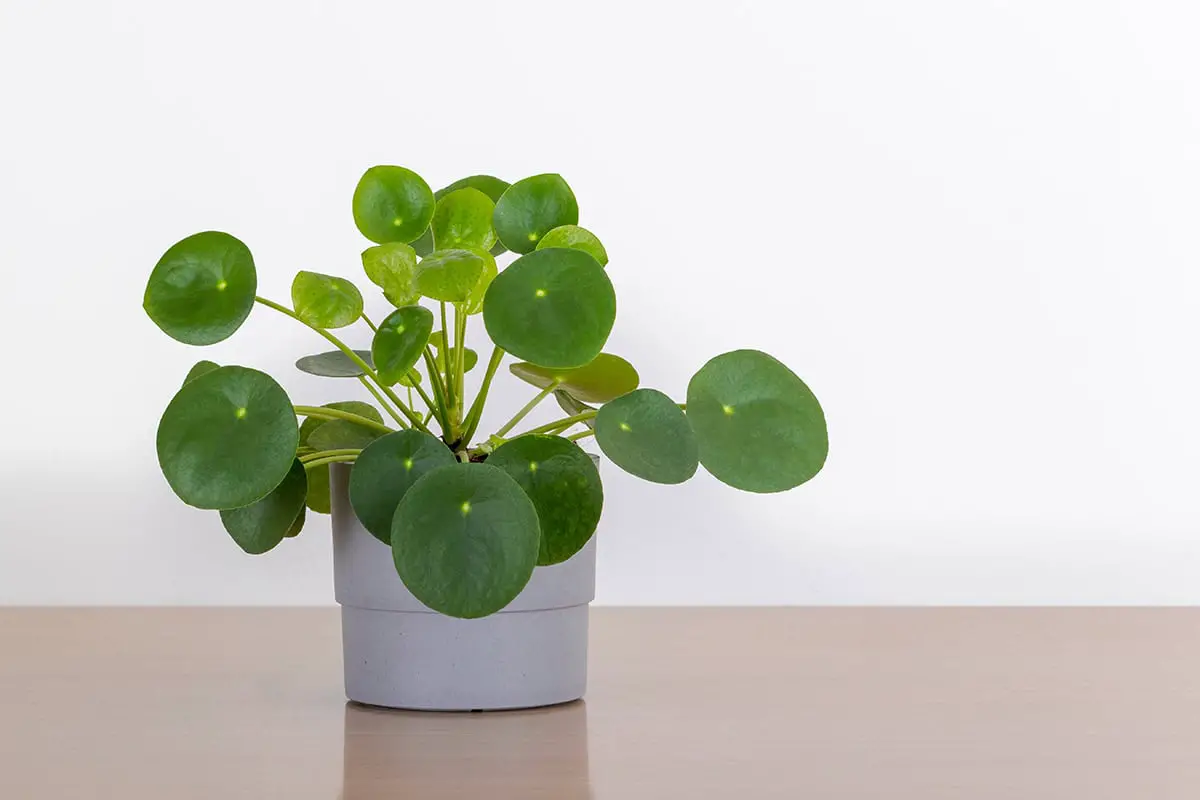
Pilea Peperomioides, also known as the Chinese Money Plant, is a popular houseplant known for its round, coin-shaped leaves. Thriving in bright, indirect light, it requires well-draining soil to prevent root rot.
Pilea Cadierei (Aluminum Plant)
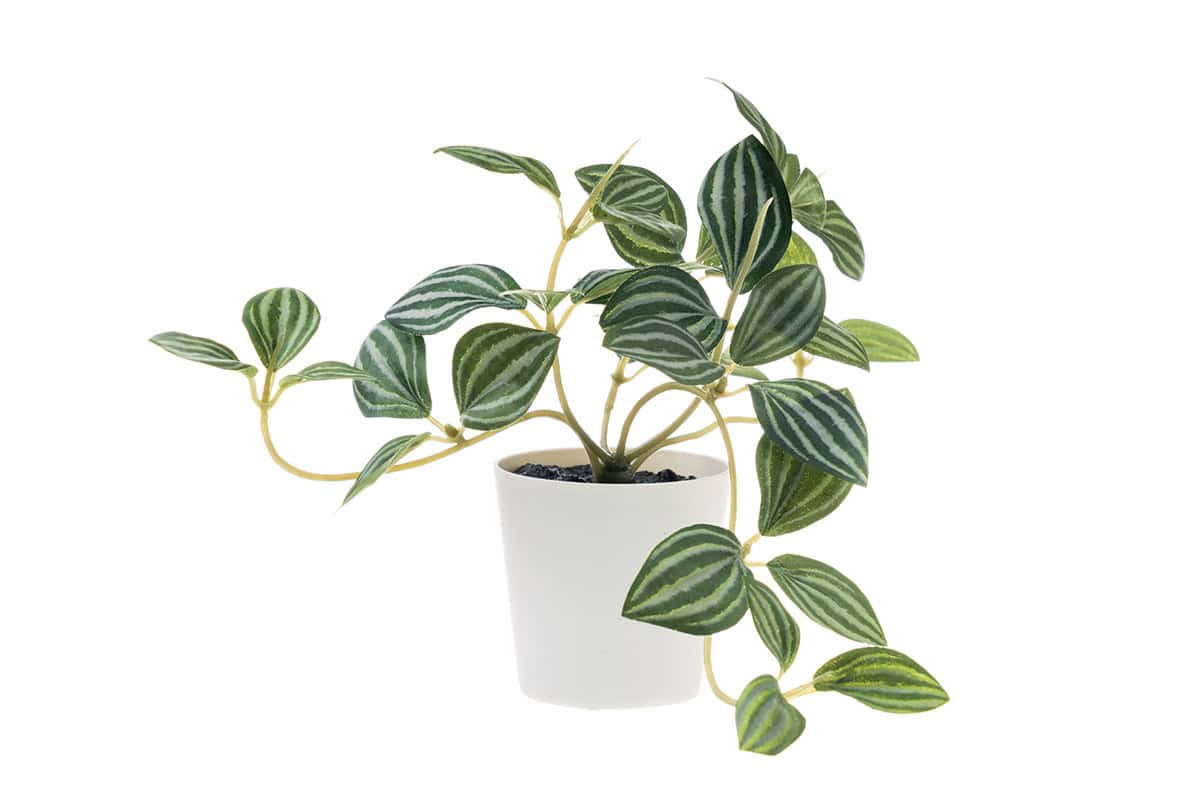
The Aluminum Plant is famous for its beautiful, shiny, silvery green leaves that resemble aluminum. This tropical plant thrives indoors under bright, indirect light and requires a peaty soil-based potting mix and high humidity.
Pilea Microphylla (Artillery Plant)
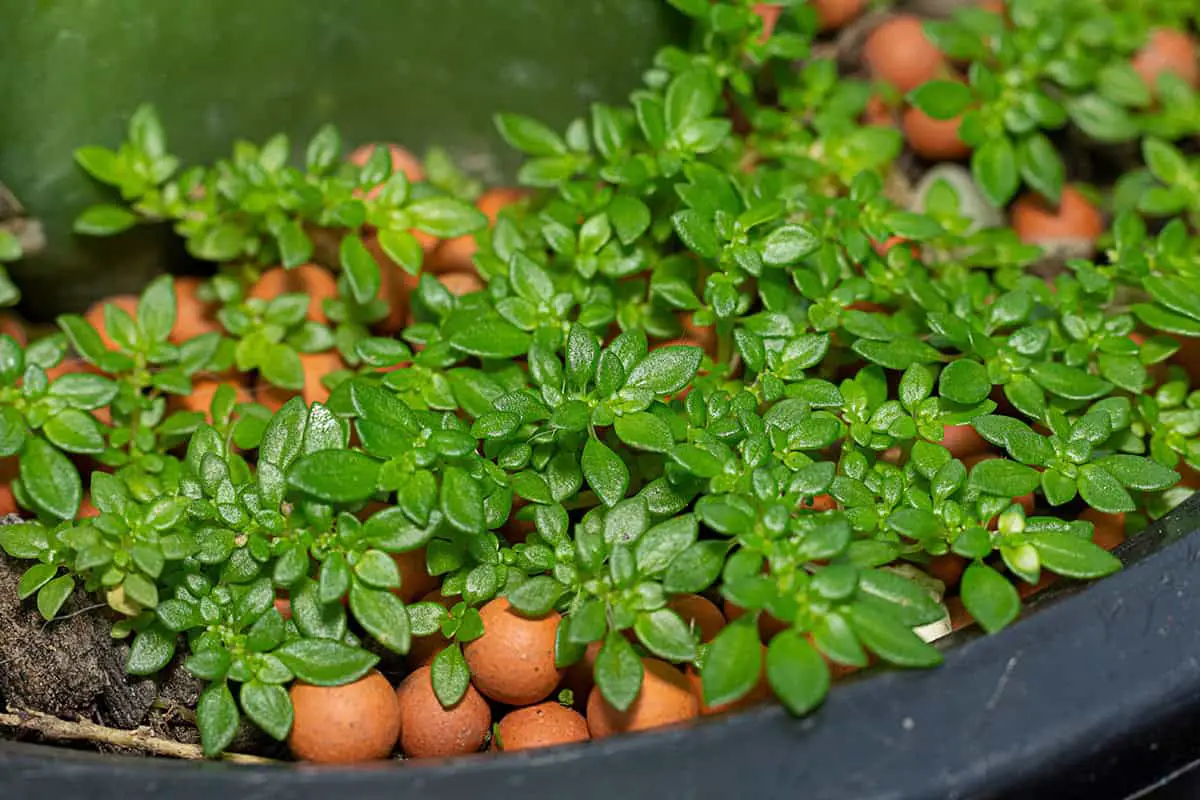
The Artillery Plant adds a unique texture to indoor gardens with its tiny, round leaves resembling a miniature fern. Grown best in bright, indirect light with moderate watering, it appreciates high humidity.
Pilea Involucrata (Friendship Plant)
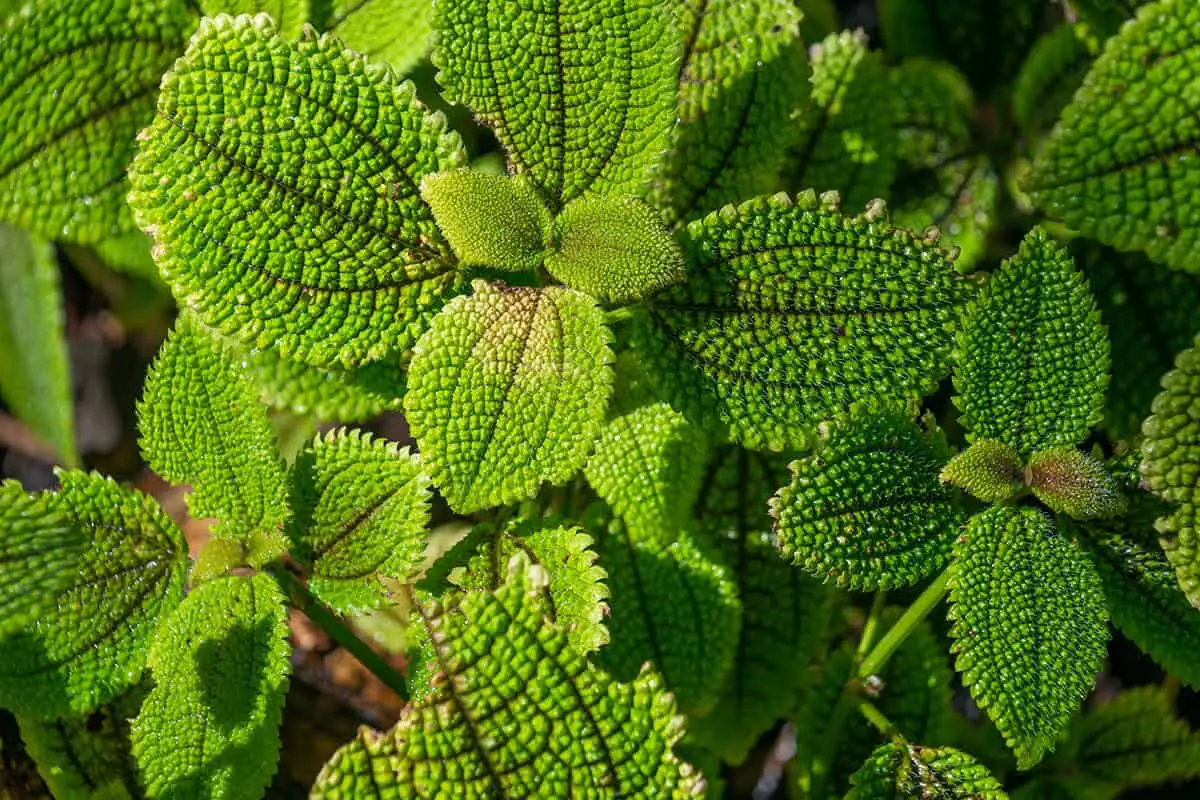
The Friendship Plant is characterized by its quilted, dark green leaves with eye-catching, deep red undersides. It prefers bright, indirect light, a peaty soil-based potting mix, and a warm, humid environment.
Pilea Mollis (Moon Valley Pilea)
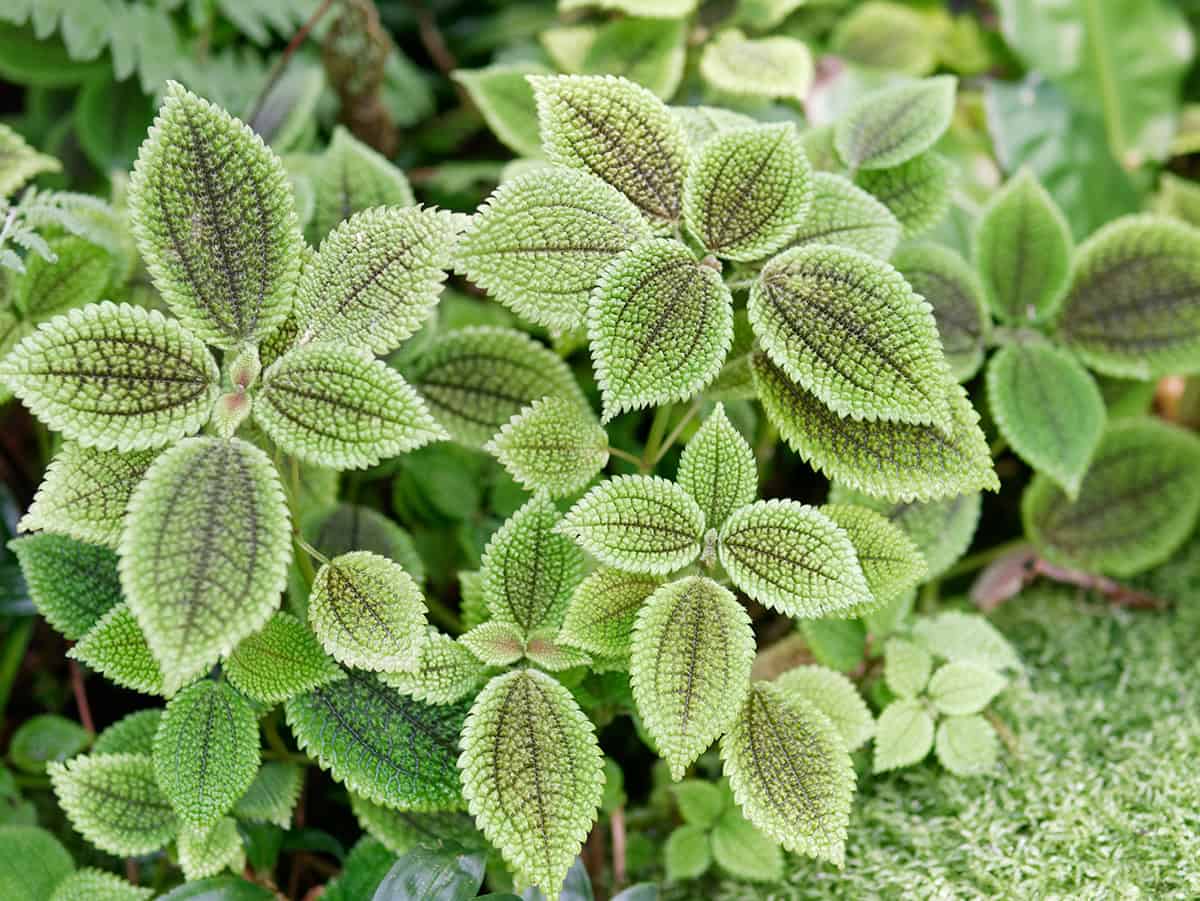
Moon Valley Pilea features oval leaves with distinct textured veins, which create a crinkly appearance. This plant prefers bright, indirect light and moist, well-draining soil.
Pilea Glauca (Red-Stemmed Pilea)
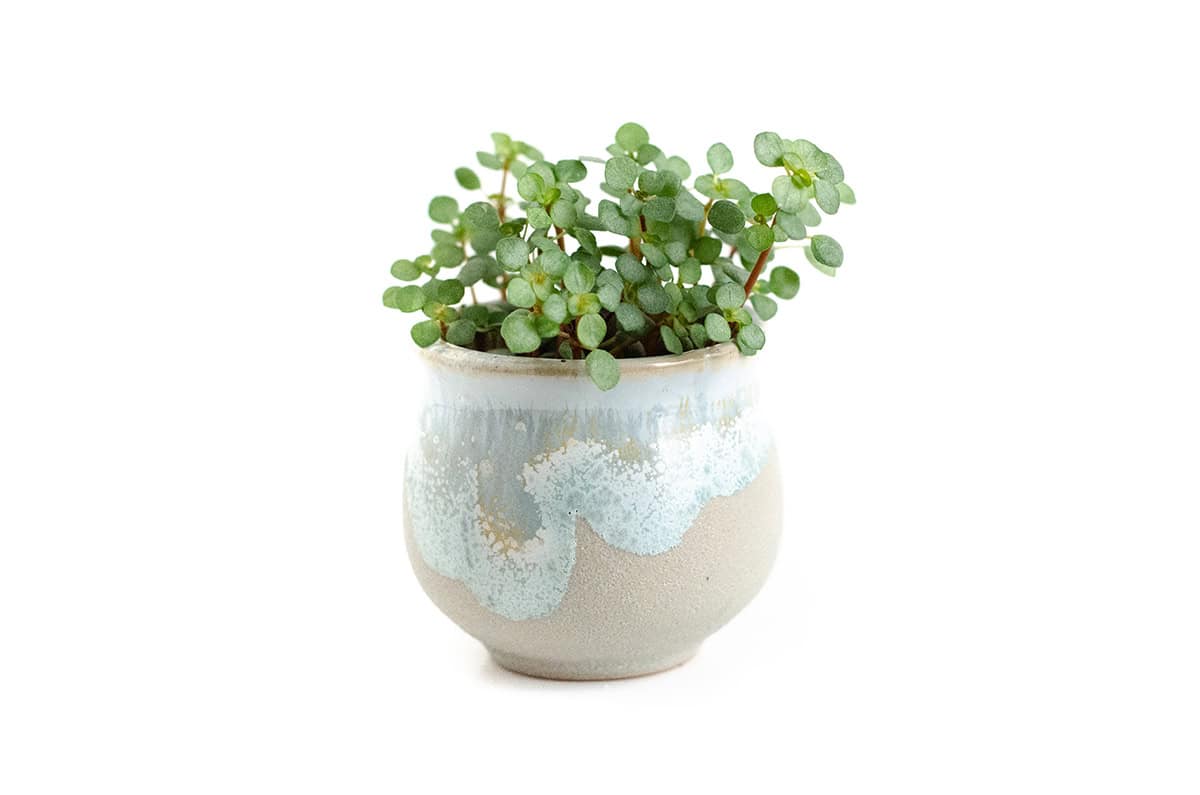
The Red-Stemmed Pilea is an attractive, cascading plant boasting tiny, glaucous leaves on red stems. To ensure healthy growth, provide bright, indirect light, moderate watering, and a potting mix that retains moisture but drains well.
